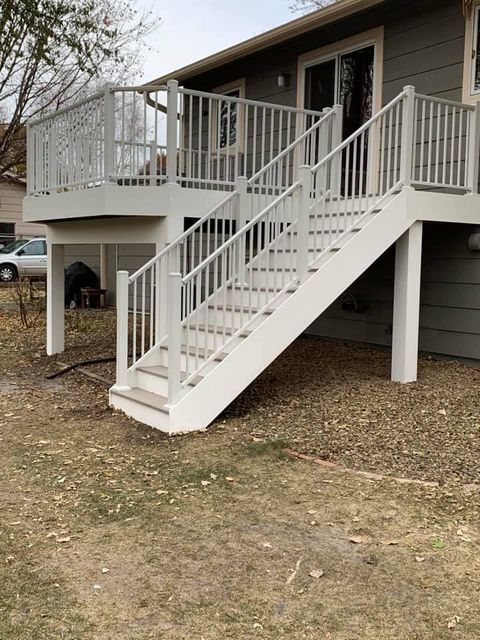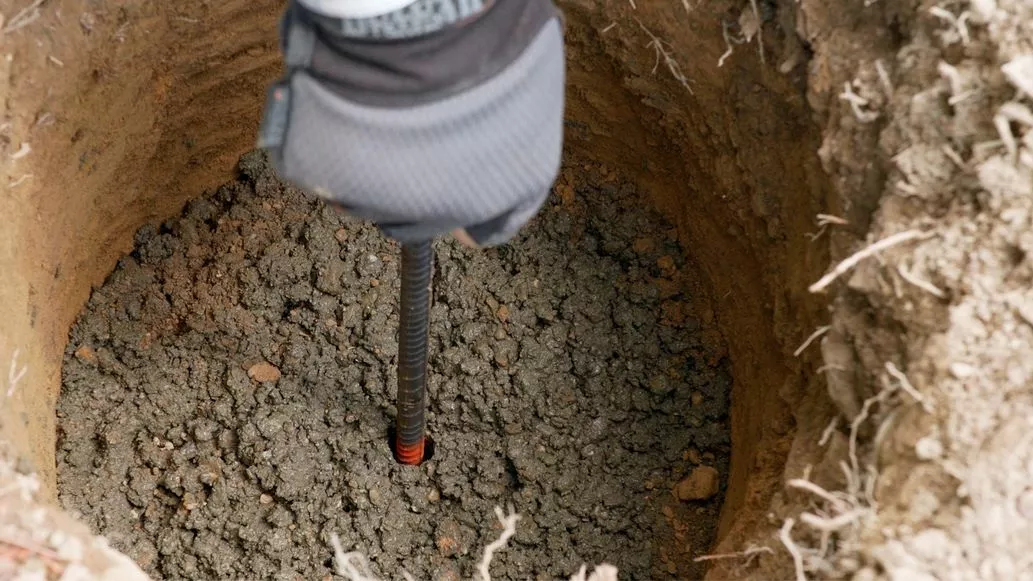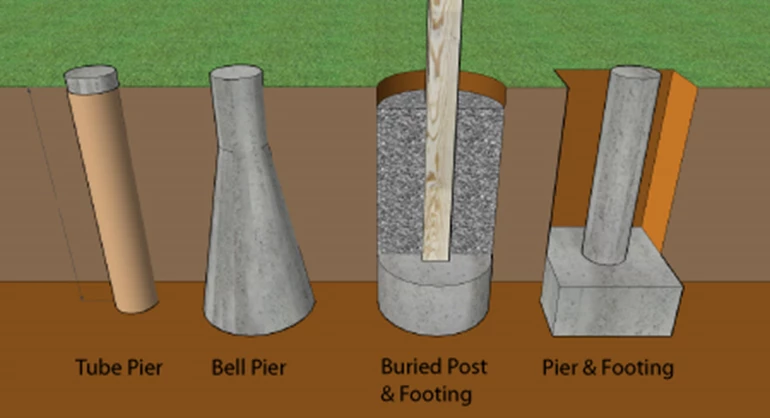Professional Tips for Installing Deck Footings to Assistance Your Outdoor Area
When it comes to building a deck, one of the most essential aspects to take into consideration is the installation of correct footings. These footings are the structure upon which your outside area will rest, providing security and support for years to come. What specifically does it take to install deck footings appropriately?
Importance of Correct Deck Grounds
Appropriate deck footings are vital for making sure the security and long life of your exterior area. When constructing a deck, it is crucial to take notice of the structure on which it will rest. Deck grounds supply the required support for the whole structure and help disperse the weight uniformly - Deck Footings. Without strong and properly mounted grounds, your deck may come to be unsteady, resulting in safety threats and pricey repair services.

Along with stability, correct deck footings also add to the long life of your outside space (Deck Footings). Grounds that are created and constructed to endure the components and dirt conditions in your location will aid protect against the deck from resolving or moving over time. By ensuring the grounds are appropriately sized and set up, you can minimize the threat of damage to the deck structure, expanding its life expectancy and reducing the need for expensive repair work or substitutes

Selecting the Right Type of Footings
When choosing the suitable kind of footings for your deck, it is necessary to think about elements such as soil conditions, local building regulations, and the overall design of your exterior room. The sort of footing you select will certainly play a critical role in guaranteeing the stability and longevity of your deck.
One typical kind of ground is the concrete ground. Concrete footings are suitable for many soil problems and give excellent support for decks. They are normally mounted listed below the frost line to stop moving and clearing up because of cold and thawing cycles. Another option is helical piers, which are suitable for locations with unsteady dirt or high water tables. These piers are screwed right into the ground and supply solid assistance for the deck.
In some cases, you may need to use specialized footings, such as pile grounds or deep structures, if you are constructing a multi-level or huge deck. These footings are developed to disperse the weight of the deck over a larger area, making sure stability and preventing resolving or sinking.
Prior to selecting a type of ground, it is necessary to get in touch with neighborhood building ordinance and policies to ensure conformity. Furthermore, think about the style and intended use your outside space. Variables such as the dimension, shape, and load-bearing needs of your deck will affect the kind of footing that is most suitable.
Preparing the Ground for Footing Installment
To effectively prepare the ground for footing setup, it is vital to examine the soil problems and take necessary actions to ensure security and sturdiness of the deck. The first action is to excavate the location where the grounds will be mounted.
When the area has actually been excavated, the next step is to small the soil. This can be done utilizing a plate compactor or by utilizing a hand meddle. Compacting the soil assists to get rid of any kind of gaps or air pockets, which can cause settling and instability gradually.
After condensing Check Out Your URL the soil, it is very important to lay a layer of crushed rock or crushed stone at the end of the excavation. This will certainly offer drain and aid to stop water from pooling around the grounds, which can cause disintegration and instability.
Step-by-Step Guide to Putting Up Deck Footings
After effectively preparing the ground for footing installation, the next action is to begin the procedure of setting up deck footings. This detailed guide will certainly offer you with a visit their website clear understanding of just how to mount deck footings for your outdoor space.
Figure out the area: Start by noting the settings of the deck footings using risks and string. Make certain that the places line up with the design and format of your deck.
Dig the openings: Make use of a post hole digger or an auger to dig the openings for the grounds. The depth and size of the openings need to remain in accordance with local building codes and the particular demands of your deck layout.
Level the openings: Utilize a degree to guarantee that the openings are dug to the correct depth and are degree with each various other. (Deck Footings)
Include gravel: Location a layer of crushed rock at the base of each hole to improve water drainage and protect against the wood from decomposing.
Place the footings: Place the grounds right into the holes, making certain they are degree and plumb. Utilize a level and a gauging tape to make certain accuracy.
Secure the footings: Put concrete into the holes around the grounds, filling them to the top. Make use of an article level to ensure directory the grounds remain degree as the concrete sets.
Allow time for treating: Let the concrete treatment according to the supplier's directions before continuing with the deck construction.
Common Blunders to Avoid Throughout Footing Installation
One vital element to consider throughout the installation of deck grounds is avoiding usual mistakes that can endanger the stability and durability of your outdoor area. While deck footings may appear like a straightforward and simple part of the building process, ignoring particular elements can bring about costly fixings and potential security hazards down the line.

Furthermore, overlooking to mount correct drain measures can trigger water to accumulate around the grounds, leading to rot, decay, and the ultimate weakening of the deck's foundation. Furthermore, utilizing the wrong kind of footing material or falling short to sufficiently secure the grounds can compromise their structural honesty.
To prevent these blunders, it is necessary to speak with a professional or comply with sector guidelines to guarantee correct footing setup. By doing so, you can make certain the stability and durability of your outside room, providing a risk-free and enjoyable setting for many years ahead.
Conclusion
Finally, installing appropriate deck grounds is vital for the security and long life of your outside area. By picking the appropriate sort of grounds and properly preparing the ground, you can guarantee a solid foundation for your deck. Following a step-by-step guide and preventing typical errors during footing setup will further enhance the resilience and security of your deck.
Proper deck footings are essential for ensuring the security and long life of your exterior area. The grounds offer as a link in between the ground and the deck, permitting the weight of the deck and its owners to be dispersed evenly into the soil.One common kind of ground is the concrete footing. Place the footings: Place the footings into the openings, making certain they are degree and plumb. Secure the grounds: Put concrete right into the openings around the footings, loading them to the top.